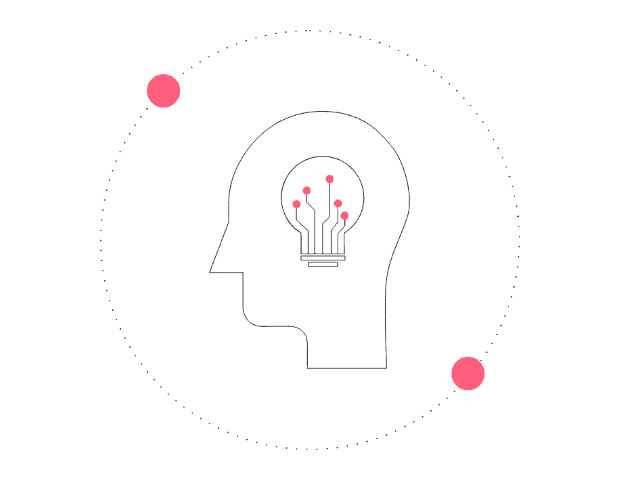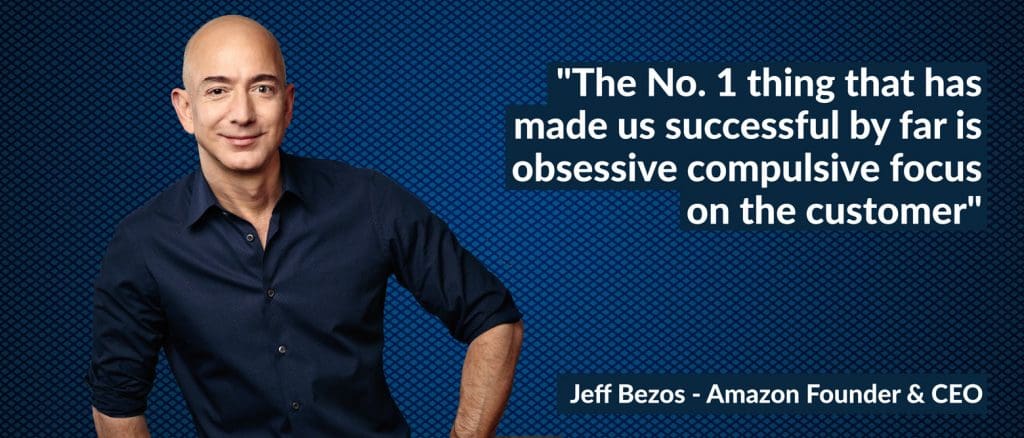Design Psychology
NEUROMARKETING: The Art Of Eternally Focusing On The Customer

NEUROMARKETING And Its Common Myths

Do you recognize this feeling while you’re walking through the Nespresso brand store? Everything seems to be in perfect harmony. The colors, counters, even the delicious smell of coffee. Everything just ‘feels’ perfect.
Luckily, we don’t have to rely on those instincts any longer. To a degree, we can quantify this ‘feeling’. (Neuro-)Research shows us why customers buy what they buy. In other words, it traces their choices back to their roots. In one word: neuromarketing.
What is Neuromarketing?
Neuromarketing is the process of researching the brain patterns of consumers to reveal their responses to particular advertisements and products before developing new advertising campaigns and branding techniques.
Neuromarketing has been rebranded with more scientific names, like “consumer neuroscience” and the more general “decision science.”
Why do we need Neuromarketing?
When it comes to fields like Advertising, Sales and Marketing, there’s a thin line between what ‘seems’ to work on the target audience, and what actually does.
Neuromarketing is what provides the marketers with a crystal clear picture of what really can boost sales. It also helps cut out the ideas that ‘seem’ to work, but turn docile later.
So here’s an example of 3 great myths about marketing that have been bursted by neuromarketing.
MYTH 1: Having a celebrity endorsement helps your brand
Do you tend to buy every product endorsed by your favourite celebrity?
Not really, or probably just once.
Research shows that having a celebrity endorsement in your advertisement can actually take the attention away from your brand. It may initially help capture the visual attention of the audience but can, unfortunately, eclipse the brand altogether. This phenomenon is coined Brand Visual Eclipse and it’s something marketers need to keep in mind when using celebrity endorsements.
MYTH 2: People who have used your brand before will remember you better
The University of South Australia investigated whether brand usage made an impact on advertisement recall of 700 participants with 64 advertisements.
The results showed that although you have used the brand before, it does not mean you will have it top of mind when shown a series of adverts that you must recall (this excludes heavy users of the brand).
MYTH 3: Consumers are completely rational shoppers
The Rational choice theory in economics states that we are rational and will make decisions to maximize the outcomes in our favor. We will evaluate with information, pros, and cons, price comparisons, and will pick the best of all the outcomes. The opponents of this theory in behavioral economics have proven very different outcomes, as people tend to buy irrationally and more on cognitive biases.
These biases help explain how people make decisions, what motivates people to seek out more information and eventually why they choose to buy the product.
Neuromarketing is utilized within a broad range of commercial testing. There are many examples of neuromarketing research in practice, as well as how information is shared and processed to help with the buyer’s journey.
Let’s now look at some exemplary aspects of Neuromarketing.
Decision Paralysis
Have you ever explored the variety of products offered but then left the shop just because there are too many options for the product you want to buy and your brain is about to explode out of indecisiveness?
Guilty!
Hick’s Law (or the Hick-Hyman Law) states that the more stimuli (or choices) users face, the longer it will take them to make a decision.
For designers of all types, this presents a challenge, making it imperative to offer the most useful set of options to avoid frustrating the user. This can be vital for safety. The U.S. Navy was quick to recognize the importance of the “Keep It Simple and Straightforward” (“K.I.S.S.”) principle, which reflects Hick’s Law.
FOMO: The fear of missing out
Don’t we come across “The last day for the Mega Sale”, and then have the sudden urge to make some use of the “great discount”?
And then don’t we end up buying something we didn’t really need in the first place?
All the time!
There’s an interesting finding that people are just as worried about what they might lose as what they might gain. Consumers hate to feel they are missing out on a bargain or on a great deal.
That’s why, “buy before it’s gone” strategies are highly effective. When the alternative option is posed as a loss, consumers are much more likely to buy.
The Importance of Eye Gaze
Images and videos that include babies tend to attract longer and more focused attention from potential customers. However,researchers discovered that when the infant looks face on, viewers will be far more focused on the baby’s face to the detriment of focusing on the ad content. However, if the infant is directing its gaze at the product or text then the viewer will in fact focus on the advertising content.
Therefore, advertisers make sure that the baby is looking at what they want the consumer to buy.
Effective Colors and Packaging
We all know the feeling of being drawn to particularly striking or attractive packaging.
8 out of 10 shoppers leave a product cold-shouldered when its packaging is damaged. Not very surprising.
However, more surprisingly, 6 out of 10 shoppers rejected the brand entirely when there was just a single damaged unit. Packaging impairment even has major effects on brand trust. The slightest damage dropped trust ratings from an average of 73% to 41%.
Neuroimaging has managed to take this to a whole new level. Neuromarketing techniques are being employed extensively to redesign packaging and presentation, according to matte being the new cool, leaving behind shiny packages (which surprisingly holds true for food packets as well as lipstick shades).
Brands such as Campbell’s and Frito-Lay have used neuroimaging to reimagine their packaging.
Just imagine, what if someone offered you a Dairy Milk, only in a yellow and green coloured wrapper? Would you get the same ‘feel’ or ‘vibe’ from it?
No! That’s because the aesthetic appeal is so important to us. Cadbury Dairy Milk’s use of the colour purple is one of the most infamous examples of the clever use of colours for aesthetic appeal.
The color purple is often associated with royalty, luxury, grandeur, peace, magic, etc.
Look! it reads, “16 luxurious pralines”.
Colours can evoke a wide range of emotions, with studies consistently showing a link between certain colors and certain emotions. Thus, utilizing a colour effectively can be a powerful marketing tool.
Anchoring
Let’s say you’re looking for a Bluetooth Speaker on Amazon. You check one out and like it but it costs way higher than your budget. The next week, there’s a sale on Amazon wherein the speaker is offered at a lesser rate, which is still higher than your budget. But this time, you are a lot more likely to buy it although it’s higher than your budget.
The result of which is the initial price. It has impacted your mind in such a way that you only see the discount on it. You fail to see that the lowered price is still unreasonable or beyond your budget.
That’s what the Anchoring Effect is.
People have a tendency to bias their decisions heavily based on the first piece of information they’re given, and for a product or service, this first piece of information is the anchor by which all other products are judged. Advertisers often take advantage of this when comparing bundle packages or deals against each other.
Reward and Punishment
Candy Crush is an extremely popular Game amongst people of all ages. Why is it so addictive? Why can’t we keep our hands off it once we start playing?
It’s because it gives rewards and game boosters, which escalate our excitement.
There’s also a loss of “life” for every time we lose.
The loss of lives makes the game even more addictive because that way, we keep checking to see if we can start playing again.
The whole system of crossing levels, failing them, achieving game boosters and losing lives plays with our innate achievement striving tendency.
That’s exactly what the Reward and Punishment technique is all about. Game design uses psychological principles in the product design process. Specifically using reward and punishment in order to make engaging games, and to keep people playing them.
By increasing the reward presented by the game, the action may also increase the levels of dopamine. Dopamine is a neurotransmitter associated with pleasure and positive associations within the brain.
The key points listed above are some of the most important aspects of Neuromarketing.
Neuroscience is to Marketing, what Strategy is to Tactics!
Connect with us now, to build your Neuroscience marketing strategy!
Read More About:
Top 5 factors and reasons for differentiating CX and UX
Find out 5 factors and reasons for differentiating User Experience ( UX ) vs. Customer Experience ( CX ) and how CX vs UX take your business next level.
Enhance Your Design Thinking Skills In 4 Minutes!
Learn awesome hacks of design thinking in just 4 minutes. Learning and applying these awesome hacks will help you have a great kick start!





